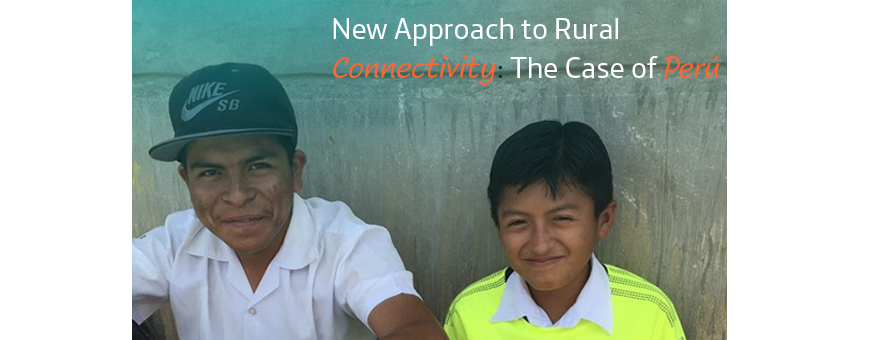Telefónica Public Policy
Telefónica and Facebook have shared their vision on how regulators can contribute to achieve the goal of Internet para todos. The policy paper “New Approach to Rural Connectivity: The Case of Peru”, presented in a workshop organized during the Mobile World Congress, stresses that providing sustainable rural connectivity also relies on complementary connectivity policies and highlights the positive steps taken by the Peruvian Government to foster investments in rural areas.
Both developed and developing countries have experienced rapid growth in mobile service penetration and Internet usage in recent years.
But still, about half of the world’s population has not experienced the benefits of connectivity.
Particularly in developing countries, the lack of digital awareness and the high costs of services and infrastructure have left a significant percentage of rural populations, where the majority of people who live below the poverty line reside, without internet access.
There is a strong link between broadband access and economic growth, making connectivity a priority for many countries. And because the benefits of connectivity are higher for rural populations due to the potential to improve incomes and living conditions, governments have been particularly concerned with rural internet access.
However, rural access continues to be difficult for most countries to achieve and, unfortunately, efforts to expand infrastructure in these areas have not been sufficient.
New approaches to solve these problems must be designed. One of these new approaches, currently being explored in Peru, offers valuable insights we can learn from and apply to solving rural connectivity issues.
While Peru has experienced rapid growth in telecom service access, too many Peruvians still lack reliable internet access. According to recent data, 80% of Peruvian towns lack internet coverage, mostly in rural areas. To improve these statistics, Operators such as Telefonica are working with government to pursue a new approach to connectivity. According to this approach, rural connectivity should be designed to include the following characteristics:
- Affordable: Affordability is central for a successful rural connectivity model — not only for users but for operators too. Operators must be willing to make an investment in infrastructure in a cost-effective way. People should have access to multiple services through flat and affordable rates, even if part of the rate is subsidized through governments.
- Community Oriented: Evidence strongly suggests that the involvement of communities, NGOs and local governments is central for a successful rural connectivity initiative. Importantly, coordination with governments will help solve issues around permits and local laws.
- Regulatory Flexibility: In most cases, rural connectivity programs are linked to license obligations or other regulations that require operators to finance specific programs and which may unnecessarily burden operators with requirements to deploy expensive, inefficient technologies when other alternatives are economically and technologically feasible. The construction of a new approach that is affordable, cost effective, and based in technological innovation will require regulatory flexibility in order to apply the best possible tools for solving the rural connectivity and access problem.
In addition to identifying these guidelines, Peru’s commitment to rural access connectivity is embedded in its Telecom Law. Peru has implemented several laws and regulations that promote infrastructure sharing between carriers and coordination with local authorities to facilitate rural connectivity.
For example, the government created FITEL, an entity that manages the Universal Service Fund in Peru, which aims to provide universal access to a set of basic telecom services for Peruvians. FITEL designs and finances telecom service programs in rural and social interest areas while promoting participation from the private sector to offer services. The Peruvian Congress also created the Rural Mobile Infrastructure Operator (RMIO) to construct and deploy networks in rural areas that lack mobile operators. This allows mobile network operators to extend their networks into these areas by using the physical network facilities of RMIOs.
While there is still much work to be done, we are encouraged by the progress being made to bring internet access to rural parts of the country. We envision that success in Peru can be replicated throughout the world so that everyone can experience the benefits of connectivity.
However, to be effective, the cooperation and involvement of regulators and policy makers is necessary to establish the appropriate incentives to motivate the market and its participants – both operators and users – to maximize their position.
For example, taking advantage of already available spectrum and infrastructure resources – can prove to be not only a successful model in providing cost effective rural broadband connectivity and access for Peru, but for other economies with similar socioeconomic and geographical conditions.
Improved rural connectivity has always been a goal for regulators and policymakers. Although this goal has not yet been achieved in Peru, taking new, innovative and market oriented, technology neutral approaches will make reaching that goal possible sooner.







